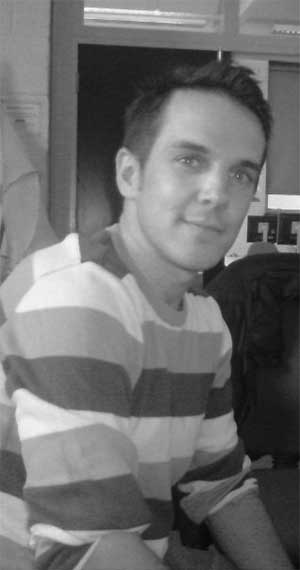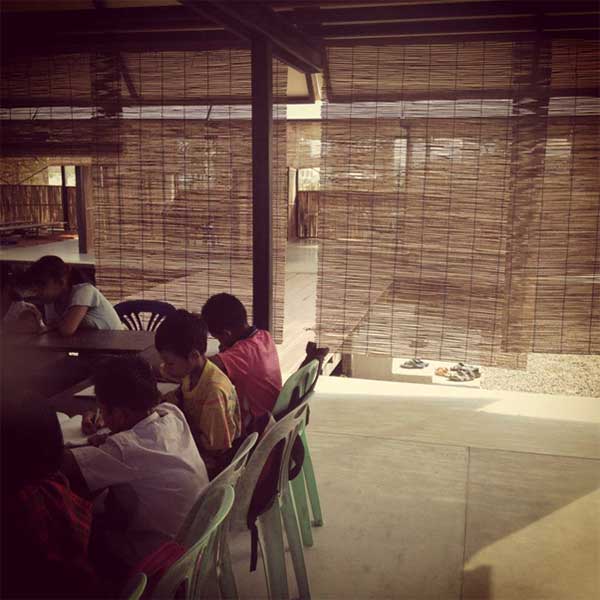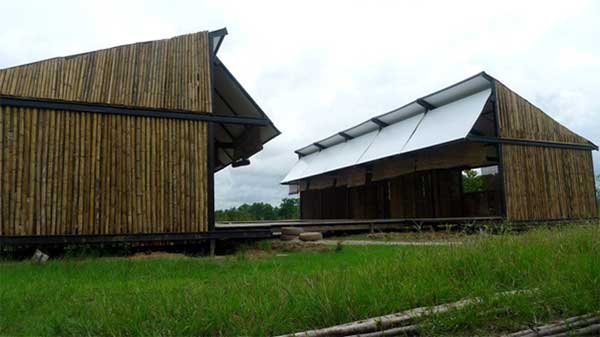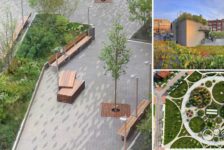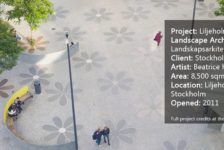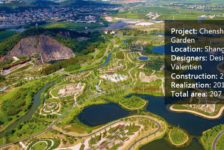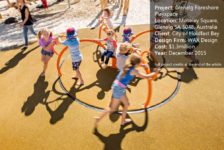Socially aware, sustainable design, and architecture for change are the main principles that Building Trust International promotes and we here at LAN heartily agree. In architecture and landscape architecture, it’s not always about size and the amount of funding, but rather about creativity, ingenious designs with great consideration for the individual, and mostly about opportunities for great ideas, which would normally not get the chance to be applied. The three main areas that Building Trust International works on are individual communities or charities in need of support, assisted by professional design advice, and coupled with funding partners and strategies. Their motto is, “Building trust volunteers and employees help to bring these three areas together, creating great designs for the greater good.” Caught your attention yet? To learn more about this great organization we talked with director David Cole, who shared insights regarding running such an organization, their impact, and why such initiatives must be promoted and multiplied.
- Could you describe Building Trust International for our readers? What is your main activity and how does it relate to landscape architecture?
We are an international non-profit organization currently working in Asia, Europe, South Central America, and North America offering design assistance to communities and individuals in need. We research the problems to find sustainable aid solutions to ultimately provide buildings, landscape solutions, and infrastructure. These core actions have blossomed into advocating and educating on the principles of socially aware design, providing an accessible resource on humanitarian design projects and providing a structure for the crossover of information between design professionals and anyone interested in designing a better future for all.
- How does Building Trust International work? How do you manage to make your projects successful?
We are relatively small. We have two full-time staff members who founded the organization with the help of family and friends a little over two years ago. We are now beginning to grow by taking on volunteers and sharing skills with others that share our goals, helping to set up and initiate projects in countries that can be run by locals. Making every meeting count and not refusing help when offered has allowed us to make a big impact quite quickly. We are at a stage where we need help in managing the amount of requests that we get to volunteer on projects and we hope that we can continue to help people, help others.
- What kind of projects do you usually tackle? Are there certain characteristics that you look out for?
“Problem solving” is the common theme with all our projects and they begin with this clear intention. When designing anything it is always the designers’ intention to make something better than what was done before. We wanted to harness this creativity and passion for change and direct it towards problems of humanitarian or environmental nature.
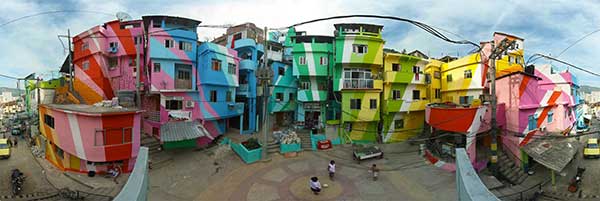
Artists Haas and Hahn created stunning artworks in the slums of Rio de Janeiro in collaboration with local people to use art as a tool to inspire, create beauty, combat prejudice, and attract attention.

Felipe and Federico Mesa (plan:b) have made it their mission to give life back to tired old buildings and materials in Medellín, Colombia. They are well aware in fact, of the profound social differences that divide their country.
- I understand that you also hold competitions for architecture design. Could you tell us a bit more about that?
Competitions are a way, in which, designers can express their creativity and present their ideas without being swayed by the whim of a client. There is, admittedly, a brief, which sets out a number of constraints (the problems that need to be solved if you like.) Our competitions allow both established offices and young designers to explore themes that they might want to explore, but cannot for the simple reason that they do not produce the money that more commercial practices offer. We have found that the top design solutions, which appear in our competitions, are then featured in mainstream press and design press alike because they transcend the usual concepts for a new office building or park. They have real value that can be measured and yield benefits for all and not just those using them.
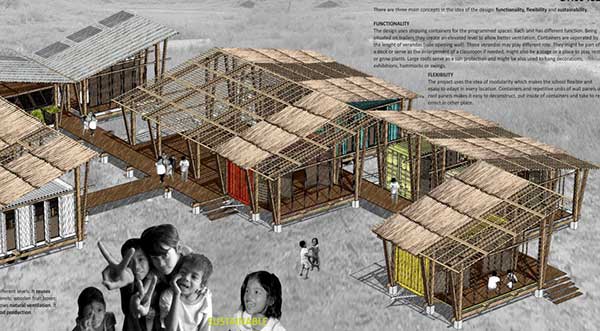
Izabela Karczmarczyk provides a solution using shipping containers and deals with overheating and reduces the industrial aesthetic by creating a timber and grass roof.
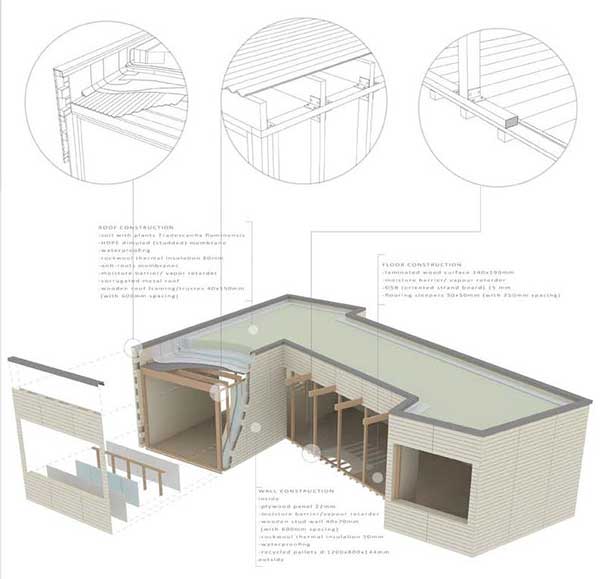
HOME competition student shortlist. Project titled “The Anti-Crisis Nest” combines functionality and sustainability.
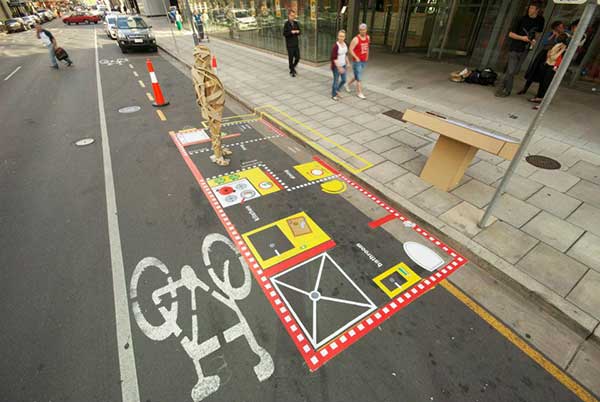
Mulloway Studio participated in PARK(ing) Day in Adelaide. They received an honorable mention in the HOME competition and Building Trust International along with other partners has agreed to continue to support their aim to realize their design for a $30k house.
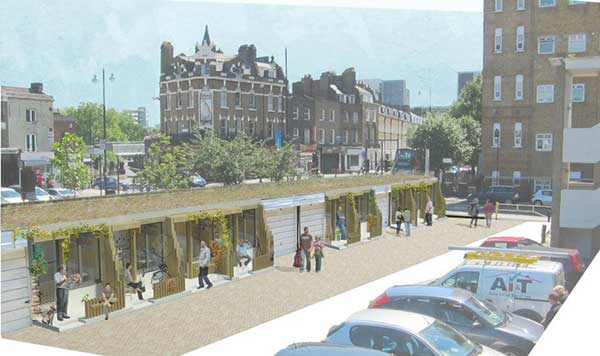
HOME competition winning entry professional category. Design by Pop-Up HAWSE, which aims to combat homelessness in the London Borough of Hackney.
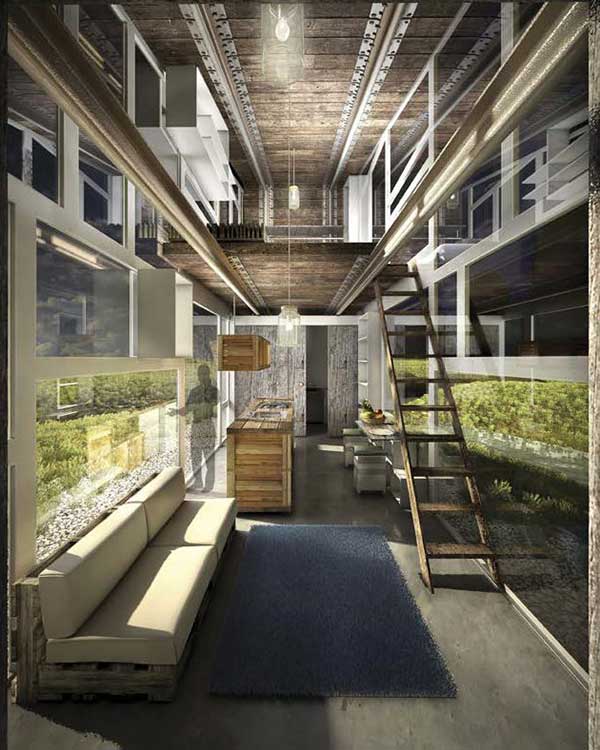
HOME competition shortlist entry professional category. This proposal, located in Rainham, Greater London, seeks to provide sufficient, efficient, and necessity based community living.
- Which would you say were your most successful projects? Give us a short description.
The built projects get quite a bit of attention and this is great, we are undoubtedly proud of them. However, we believe the best work we have done to date is working with universities by directly setting course material or through the use of our competition briefs by tutors. There is a shift in the way young designers are thinking about design. For instance, what it means, how it will be contracted, and essentially re-evaluating what “good” design is. It is great to be part of this and to encourage the next generation of designers to get involved with the themes we are working on.
- Your latest project, “Moving Schools” takes place on the Thai-Burmese border. What is the objective of this project and what are the stages of development?
The Moving Schools project responded to the need to provide refugee and migrant communities with schools and public buildings that could be assembled and taken down, moved, and reassembled on a new site. This is due to the fact that these communities often have no rights to own land in their host countries. We unfortunately live in a world where refugee numbers rise and fall across continents each year. Design solutions for displaced people range from UN tents to makeshift structures and poorly made block and tin roof solutions.
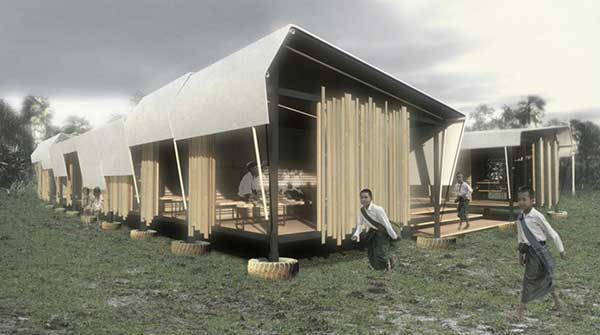
Winning design entitled BURMA (RE)FRAMED from ‘School 4 Burma’ competition design by Amadeo Bennetta / Daniel LaRossa from Berkeley, CA, USA.
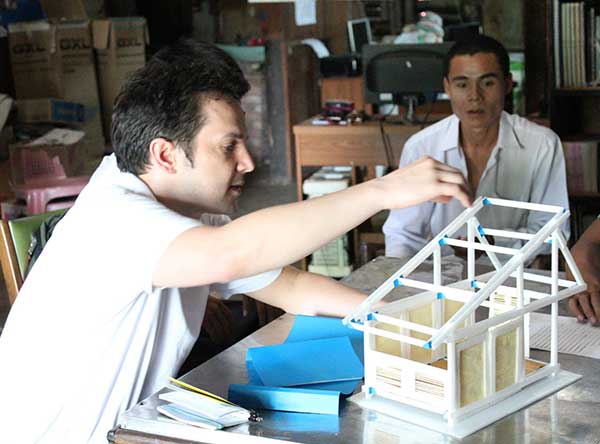
David Cole (Co-Founder) of Building Trust International explains the classroom and roofing structure with teachers from Kwe Ka Baung and school Headmaster.

Kids affected by typhoon at Shwe Tha Zin Learning Centre from existing migrant schools on Burmese Border.
- What are Building Trust International’s goals for the future? Where and on what do you see yourself working on over the next few years?
We would like to see the completion of the projects that we are currently working on, which focus on finding housing solutions for the homeless in London and designing a prototype for flood resistant housing in Cambodia. We are very keen to continue our core goal of encouraging designers to get involved with humanitarian projects. We are exploring new ways of developing projects with peer-based models, sponsorship, and crowd funding. Additionally, we have some exciting new ideas regarding how to engage the public in the design process and to harness the growing desire of people to get involved and we encourage people to set up their own initiatives. We also have a fantastic new competition beginning later this year! Organizations like Building Trust International is what architecture and local communities need these days to push forward the implementation of innovative ideas for improving people’s quality of life. It’s not only a case of architecture for aesthetics and practicality, but ultimately architecture for change! So, if you have a great design in mind, submit it for their competitions. If you want to develop your skills and help people, volunteer, and have a hand in making these projects happen fundraise or donate! Great people talk about ideas and awesome people make things happen! Find out more here Interview conducted by Oana Anghelache Enjoy what you’ve read! Support us and pick up one of our awesome T-shirts and hoodies today, Click the link
This article was originally submitted to Landscape Architects Network
Published in Blog


